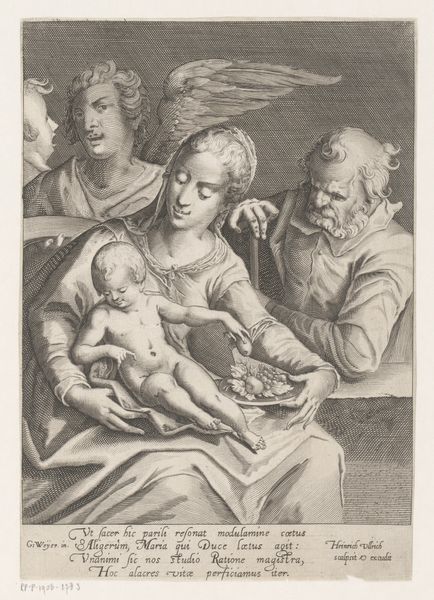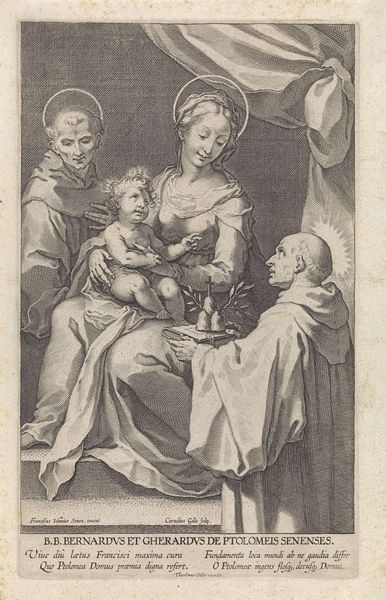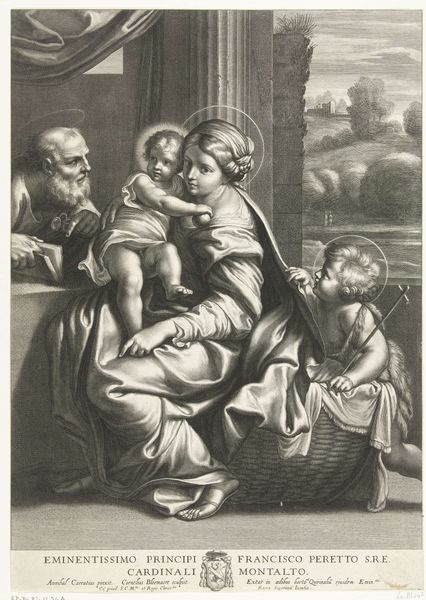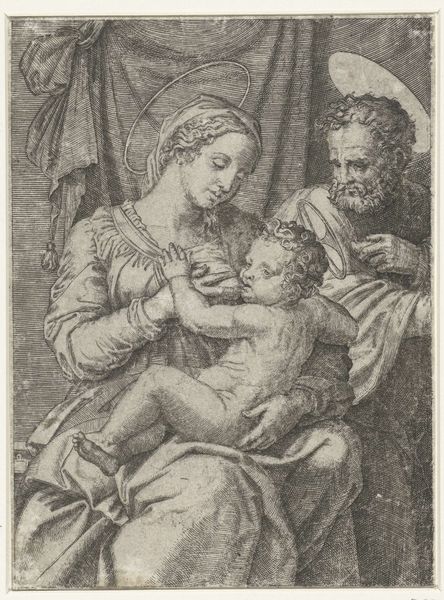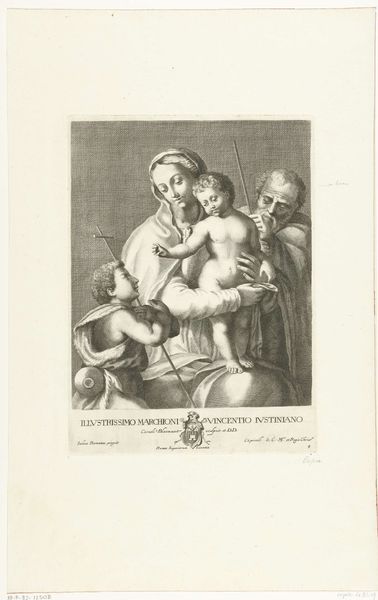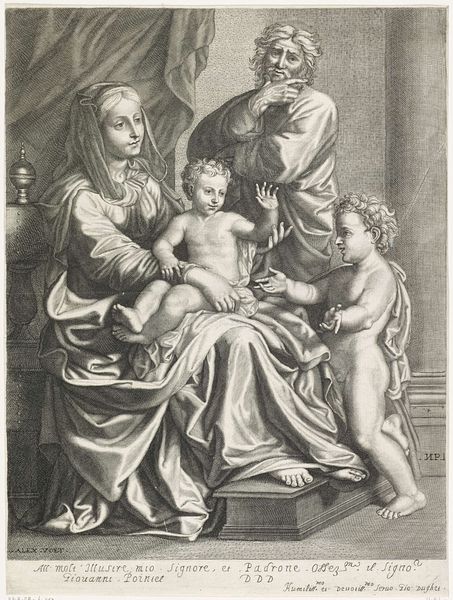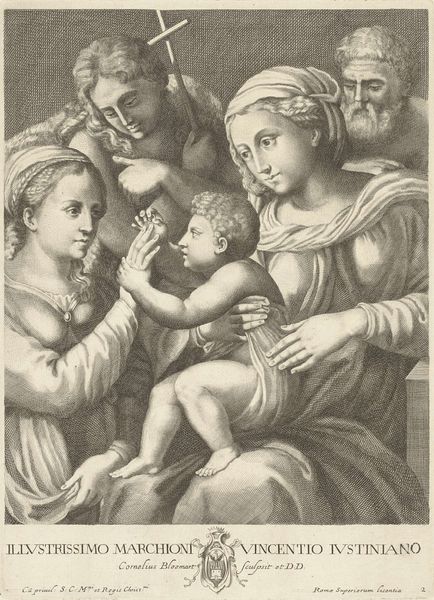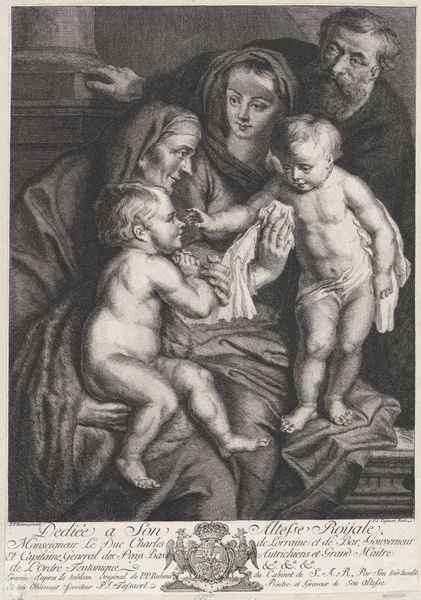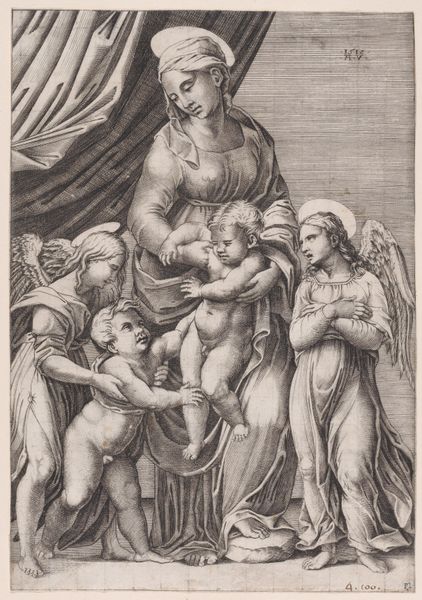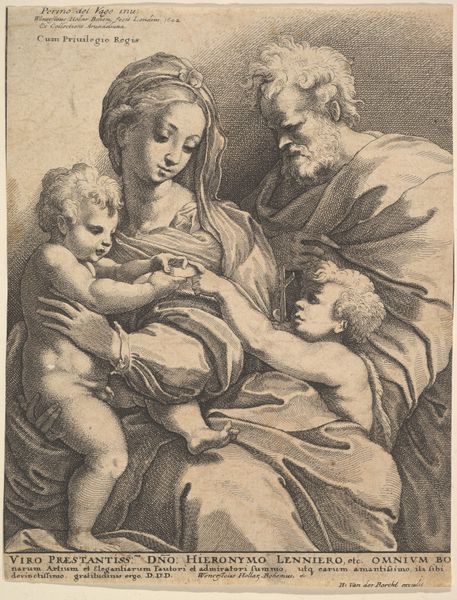
print, engraving
#
portrait
#
baroque
# print
#
old engraving style
#
caricature
#
figuration
#
line
#
portrait drawing
#
history-painting
#
engraving
Dimensions: height 300 mm, width 220 mm
Copyright: Rijks Museum: Open Domain
Curator: Here we have "Seated Madonna and John the Baptist," an engraving made sometime between 1633 and 1650. It’s attributed to Cornelis Bloemaert and currently resides in the Rijksmuseum. Editor: My first impression is the overwhelming stillness despite the very baroque flourishes, like the baby Jesus reaching outwards and John's imploring gaze. I’m also struck by how labor-intensive the engraving process must have been to achieve these delicate gradations of tone. Curator: Absolutely. Bloemaert, of course, operated within a highly structured artistic and social landscape. The baroque style itself was deeply connected to the Counter-Reformation, intended to inspire awe and reinforce religious doctrine, but circulated within elite social circles and institutions of power. Prints like this allowed the proliferation of powerful imagery that buttressed the political influence of the church and noble families such as that of the dedicatee of this print, Marchioni Vincentio Iustiniano. Editor: I'm also fascinated by the contrast of textures: the soft, yielding fabric of Mary's robes against the almost metallic sheen of the children’s skin, achieved through the engraver's craft. Each line is carefully etched to build up these sensations of weight and presence using available materials and craft traditions of the era. Curator: The print’s creation was also intrinsically tied to the burgeoning art market and printmaking culture of the time, influencing audience reception of these religious motifs within distinct societal settings. How these prints moved, were bought and sold and distributed mattered a lot, beyond simple appreciation of artistry, to cultural assimilation and sociopolitical power dynamics of seventeenth-century Holland and beyond. Editor: Yes, seeing it this way gives a sense of materiality and also acknowledges labor. I now appreciate that this piece bridges devotional iconography with a palpable understanding of production. Curator: Indeed. By understanding its historical trajectory, we see the artwork as both an object of beauty and a testament to institutional control and the propagation of value. Editor: And for me, reflecting on the painstaking efforts needed to produce a single print enriches its visual impact, making me more mindful of those laboring hands of artists long dead and the choices behind available tools.
Comments
No comments
Be the first to comment and join the conversation on the ultimate creative platform.
